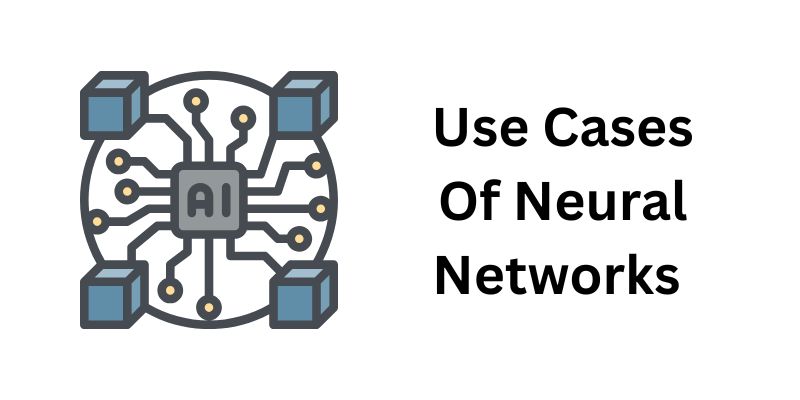Advertisement

Struggling with bugs or confusing code? Blackbox AI helps developers solve coding problems quickly with real-time suggestions, explanations, and code generation support

Discover how ChatGPT can help Dungeon Masters and players enhance their Dungeons and Dragons experience by generating NPCs, plot hooks, combat encounters, and world lore

Learn how to create professional YouTube videos using Pictory AI. This guide covers every method—from scripts and blogs to voiceovers and PowerPoint slides

Explore the core technology behind ChatGPT and similar LLMs, including training methods and how they generate text.

How Oppo’s Air Glass 3 XR brings AI-powered VR glasses to everyday life with smart features, sleek design, and seamless usability in real-world settings

Learn how to build Custom GPTs using this step-by-step guide—perfect for developers, businesses, and AI enthusiasts alike.

Explore 6 practical techniques for displaying lists in Python using tools like the print function, for loop, and f-string formatting. This guide helps you show list data cleanly and clearly for real-world use

Think ChatGPT is always helping you study? Learn why overusing it can quietly damage your learning, writing, and credibility as a student.

Discover machine learning model limitations driven by data demands. Explore data challenges and high-quality training data needs

Wondering how AI finds meaning in messy data? Learn how vector databases power similarity search, make tools smarter, and support real-time AI features

How to convert string to a list in Python using practical methods. Explore Python string to list methods that work for words, characters, numbers, and structured data

Looking for AI tools to make learning easier? Discover the top 12 free AI apps for education in 2025 that help students and teachers stay organized and improve their study routines
You’ve probably seen the acronyms floating around—CNN, RNN, ANN. They pop up in articles, YouTube tutorials, tech blogs, AI explainers... all of it. But what do they actually mean? And more importantly, how are they different?
Well, if you’ve ever asked, “Okay, what’s the real difference between these three?” or “Why do they keep showing up in machine learning stuff?”... this one’s for you.
Let’s break it all down. No tech degree required (promise).
Before we even touch CNNs and RNNs, let’s zoom out for a second…

All three of these—CNN, RNN, and ANN—are types of artificial neural networks. Yup, that’s what “ANN” literally stands for: Artificial Neural Network.
Think of a neural network like a very basic digital brain. (Not an analogy, more of a comparison—it’s inspired by how our brains work, kind of.)
These networks learn by looking at examples, spotting patterns, and getting better with practice. Just like how we do things in real life... except it doesn’t need coffee or a pep talk to focus.
Let’s start simple.
Artificial Neural Networks (ANNs) are the OG model. They’re built using layers:
It’s a straight path without complications… from start to finish. No loops. No crazy detours. Just clean, basic “learn this pattern and make a decision” type.
You’d use ANNs for basic stuff like:
But here’s the thing—ANNs are kinda limited when it comes to data that’s... messy. Or sequential. Or visual. That’s where the other two step in.
Okay—CNNs are your go-to when you’re dealing with images or visual data.
The name sounds like a tongue-twister (Convolutional Neural Network, try saying that fast three times), but here’s what matters:
They’re really good at looking at images, spotting patterns in them, and figuring out what they show.
Like:
The “convolutional” part just means it uses filters to scan small parts of the image, one bit at a time—like a sliding magnifying glass that checks every corner, every edge, every texture.
And because of that design, CNNs can spot details in images without getting overwhelmed by the size or complexity. It's basically the “eye” of AI systems.
Now let’s talk RNNs. These are your go-to when you’re working with sequences.
What does that mean? Basically, anything where order matters.
Recurrent Neural Networks are special because they remember what came before. Unlike ANNs or CNNs that treat each piece of data like it’s brand new, RNNs look back and say, “Wait, what was the last thing again?” (Kind of like how we remember context in a convo.)
This “memory” lets them understand patterns in data that unfolds over time. Like figuring out what word comes next in a sentence—or if a customer is likely to cancel a subscription based on behavior from the last six months.
Let’s put it side by side—because yes, all three are neural networks, but they specialize in different things.
Model | Best For | Key Feature |
|---|---|---|
ANN | Simple tasks, structured data | Straightforward, no memory or special tricks |
CNN | Image processing | Uses filters to detect patterns in visuals |
RNN | Sequential data (text, audio, time series) | Remembers past inputs to make better decisions |
Think of them like different tools in the same toolbox. You wouldn’t use a hammer to fix a leaky pipe, right? Same idea.
Here’s how all three show up in real-world tech:

ANN:
CNN:
RNN:
Each model has its lane—and they’re all doing a ton of heavy work behind the scenes in apps we use every day.
You might have heard of terms like LSTM or GRU floating around with RNNs.
Just to clear the air:
They’re both upgraded versions of RNNs that deal with one big problem: forgetfulness.
See, vanilla RNNs (yep, that’s what they call the basic version) tend to forget things after a while. LSTMs and GRUs were built to remember better and not get confused by longer sequences.
So if you’re dealing with more complex data (like writing long paragraphs or translating languages), LSTMs or GRUs are where it’s at.
Honestly? Depends on the job.
No one-size-fits-all here. And that’s actually a good thing—it means these models are crafted to handle different kinds of real-world problems.
Let’s be real, it’s easy to get overwhelmed with AI lingo. CNN, RNN, ANN…
But the main takeaway?
We’ve all got that moment where we're like, “Wait... did I miss this part in school or something?” (You probably didn’t. These tools weren’t even mainstream back then.)
So the next time you come across a blog post or product that says “powered by a CNN” or “uses RNN-based models,” you’ll know exactly what that means—and maybe even why they chose that model in the first place.